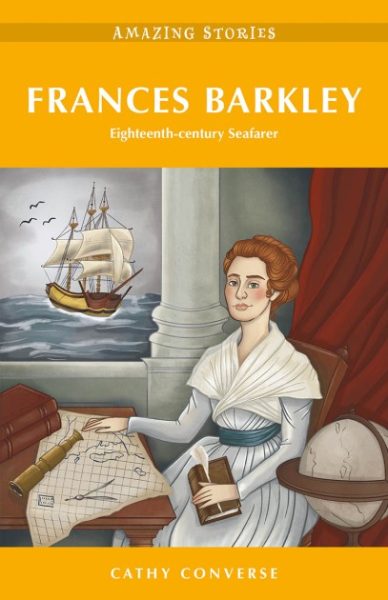
Frances Barkley: Eighteenth-century Seafarer
Review By Laura Moberg
January 6, 2024
BC Studies no. 219 Autumn 2023 | p. 133-134
In November 1786, seventeen-year-old Frances Barkley embarked on a trade mission with her new husband Captain Charles William Barkley in his ship the Imperial Eagle. Over the next eight years, the Barkleys would sail around the world twice, trading in sea otter pelts, Chinese tea, silk, porcelain, and cotton. With this voyage, Barkley became the first woman to openly circumnavigate the world, and the first European woman to visit the Pacific Northwest and the Hawaiian Archipelago.
In Frances Barkley: Eighteenth-century Seafarer, Cathy Converse brings Barkley’s story to life through a creative retelling of her memoir, Reminiscences, now held in the British Columbia Archives. Converse filled gaps in Reminiscences through archival research, consultation with maritime historians, and conversations with descendants of the Barkleys. This slim book is comprised of short chapters corresponding to legs of the journey, and the text is supplemented with maps and illustrations which help readers to visualize the people and places Barkley encountered. Converse provides historical background and contextual information through the introduction and conclusion, endnotes, and glossary. Her combination of careful research and clear, descriptive prose makes for an informative and highly readable account.
This book is a unique contribution to the literature on the eighteenth-century maritime fur trade and the experiences of European women in these trade networks. As an engaging first-person narrative, Converse’s book presents Barkley’s story and historical context in a form that is accessible to a wide range of readers, including those unfamiliar with this history. The narrative offers an immersive window into the challenges and excitements of seafaring life at the time, including food scarcity, illness and disease, trade practices and rivalries, pirates and privateering, and the perils of bad weather. Of particular interest is the way Barkley’s story situates the sea otter trade in the Pacific Northwest in the context of global maritime trade networks of the eighteenth century.
Readers should keep in mind that this is a work of creative non-fiction which does not provide the same first-hand perspective as the primary source material – a transcription of which is published in Beth Hill and Cathy Converse’s The Remarkable World of Frances Barkley: 1769-1845. In particular, the depictions of Indigenous peoples Barkley encountered on her travels are relayed with curious neutrality, contrasting sharply with racist and deprecating descriptions found in Barkley’s Reminiscences. Observations on the labrets worn by Tlingit people in Sitka Sound and Yakutat Bay, for example, are written in impartial terms in Converse’s Frances Barkley, but in overtly disparaging terms in Reminiscences. While the removal of racist language is understandable considering the book’s intended audience, this decision is worthy of discussion. Unfortunately, Converse does not meaningfully address these modifications, stating in the introduction that “[i]t is impossible to know how Frances felt about the people she encountered as she never voiced her opinion in her journal or letters” (5). There remains a valuable but untapped opportunity to critically examine how Barkley represented Indigenous peoples in her journal and to frankly consider the racialized, gendered dynamics within which she experienced her world and these sites of encounter.
Overall, Frances Barkley: Eighteenth-century Seafarer is an accessible, engaging account of the late-eighteen-century maritime fur trade from the perspective of a young British woman aboard a merchant sailing ship. With its compelling blend of fact and fiction, this book will appeal to a wide audience, especially those interested in the history of the maritime fur trade, travel writing, and women’s experiences in the Pacific Northwest.
REFERENCES
Hill, Beth, and Cathy Converse. 2008. The Remarkable World of Frances Barkley: 1769-1845. Victoria: TouchWood Editions.
Publication Information
Converse, Cathy. Frances Barkley: Eighteenth-century Seafarer. Victoria: Heritage House Publishing. 2023. 144 pp. $12.95 paper.
